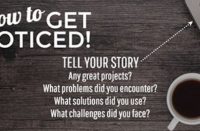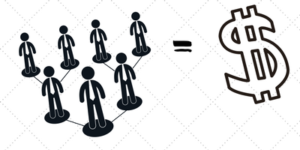In the world of email marketing, the “e-blast” can be a highly successful vehicle for connecting with your customers. But all too often, decorative concrete contractors underuse this vital marketing strategy. Even when the strategy is employed, it’s often misunderstood and target audiences are “blasted” with junk. Instead, reach your customers with great content they can use. And never confuse the importance of quality over quantity. The end result? You become a trusted resource for your customers, and new business follows.
The benefits of adopting an effective e-blast strategy are well worth the uncomplicated effort it involves. Cost-efficient when compared to direct mail and other efforts, an e-blast allows you to stay in front of your customers on a regular basis. Web applications and email marketing software have simplified the process. With a point and click, your message is loaded and sent to your email distribution. Once you’ve selected your distribution platform, beginning an e-blast program doesn’t have to be a complicated project.
Getting started
As with any marketing effort, the key to a successful e-blast program begins with a clear strategy. First, map out your goals. They might include the following typical examples: increase awareness of your products and services;
build trust with potential clients by showing how you work, your company’s expertise and the results you can deliver; and ultimately, generate new leads for your business.
Next, plan your content. As you plan, the most important thing to remember is your content isn’t about you, it’s about your customer. In other words, don’t tell your customers only what you want to say. Tell your customers what they want — and need — to hear. According to Constant Contact, a leading Web application for email marketing, 56 percent of consumers blame irrelevant content as a reason for disengaging with a brand online. Your message must clearly and quickly relate to your customers’ needs, or they’ll click delete.
Brainstorm and ask probing questions that will help you get inside your typical customer’s thought processes. What problems do your customers face and how can you help solve them? Have you recently completed a unique project? Showcase your work in a case study. But even case studies can take a wrong turn if it’s all about you.
The case study has to pass the “so what” factor, with the customer’s benefits clearly stated at the beginning. Simply regurgitating project facts and stats in paragraph form won’t engage your audience. Examine the project. What about it could help other clients in their business? What solutions does the case study exemplify?
As you plan your content, keep in mind that a simple structure is best. Your customers are bombarded by messages every day, and research from Constant Contact shows that most people only deem 14 percent of their email as something they must read immediately. The most effective e-blasts are short and to the point. It’s not a newsletter. It’s not a digital magazine. One brief, useful article and a couple of shorter blurbs and news items are typical for most e-blasts. Include videos whenever possible, as these offer some of the highest click-through rates on the Internet. As well, good images are a must for an engaging e-blast.
Build your list
In addition to meaningful content, your email database is another essential part of a successful e-blast program. If you’re just getting started with an email marketing program, you can easily merge most databases with your email marketing software or Web application. You can begin with your existing business contacts to form your email list. Once the list is in place, think about how to grow it. In short, make the most of every opportunity. Here are some ideas:
Speaking engagements. Will you be speaking on decorative concrete techniques at a local association’s meeting? Be sure to have a collection spot where attendees can register to receive your news and tips. By leaving a business card, attendees can opt-in for your e-blast and perhaps even register to receive a prize or giveaway in return.
Trade shows. Likewise, if you exhibit at any shows — maybe the local home and garden show — once again, set up a collection spot where attendees can register to receive news from you and register to receive a giveaway.
Website. Add a sign-up area on your website where visitors can register for your e-blasts. And a “pop-up” field could appear only for your website visitors who haven’t registered for your e-blast. To get the most mileage out of this, make sure the website signup has a “refer a friend” option.
Social media. Promote your e-blast through Facebook, Twitter and other social media efforts. Share the link to your website signup, and when your e-blast is up and running, share it via social media, too.
Email signature. Place a link to your website signup page below your contact info in your email signature. Have others at your company do the same.
Beyond the basics – Personalize
According to Adobe’s 2015 Digital Trends Report, personalization ranks as the highest item of priority in its survey of 6,000 business professionals with an interest in digital business.
Personalizing your content is another way to add relevance. When your emails contain personalized content, your messages will stand out in the minds of your information-overloaded customers. One easy way to personalize is to use the words “you” and “your,” particularly in article titles and subject lines.
For more advanced email marketing efforts, try segmenting your content. For example, if your customers fall into two camps — commercial or residential — divide your email lists into two groups and tweak your content to fit each group’s unique needs. Or, perhaps all your decor work involves commercial projects. In this case, you may want to segment your email by the industries you serve such as retail, offices, restaurants and so on. It doesn’t have to be a complicated effort. You can take the same basic content and change the wording slightly to be more relevant to each audience.
No matter what your approach, remember email marketing can be a relatively simple way to stay in touch with your customers. Whether your customers are vastly different or fairly homogenous, relevant content is the key to building a successful email program — and lasting relationships with your clients.















